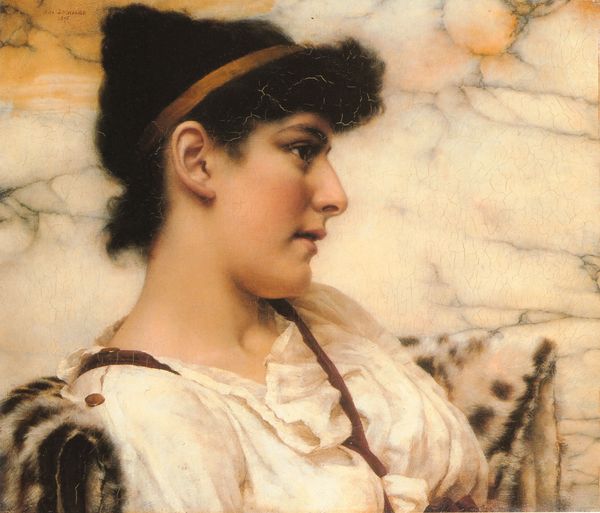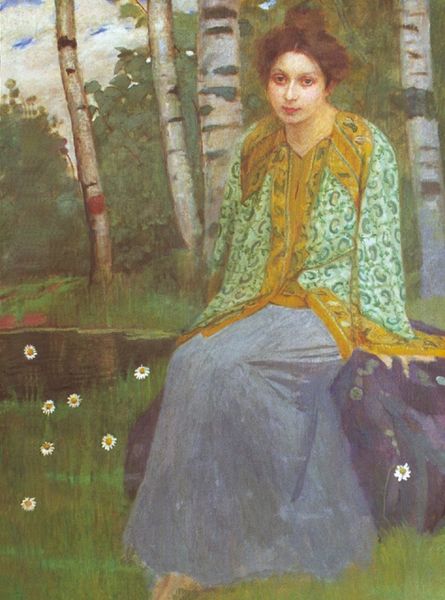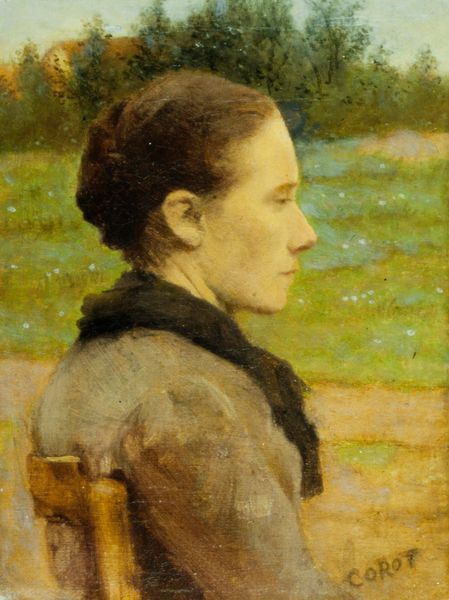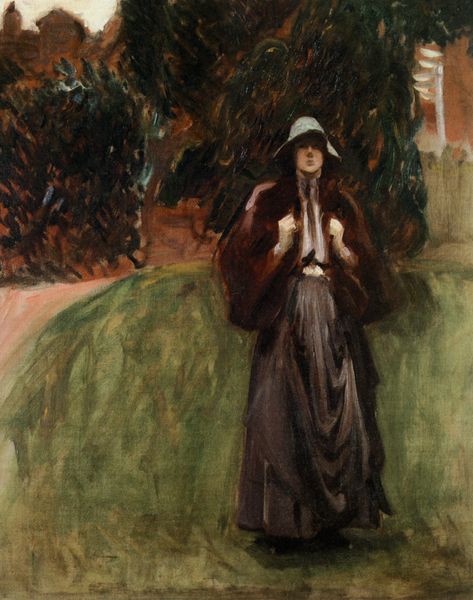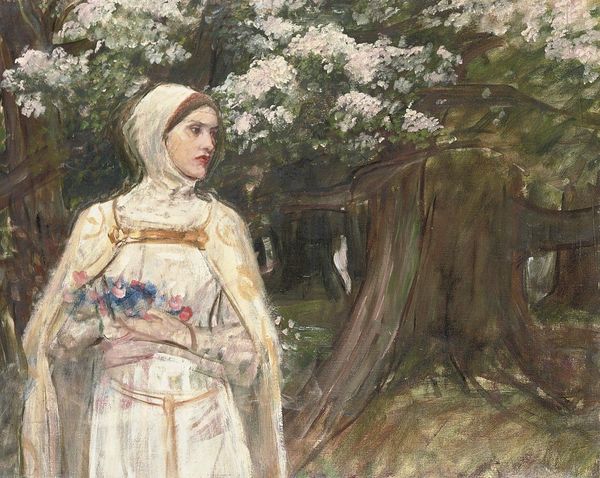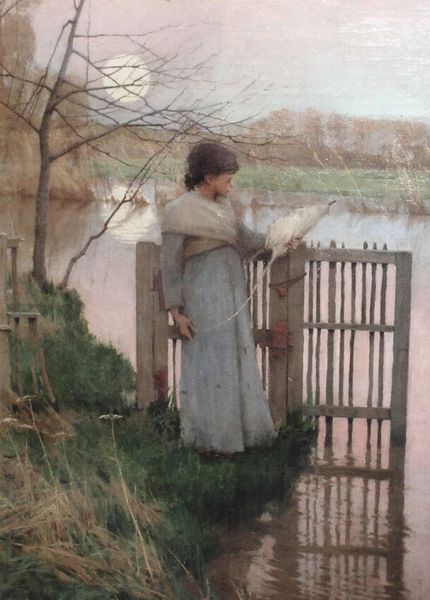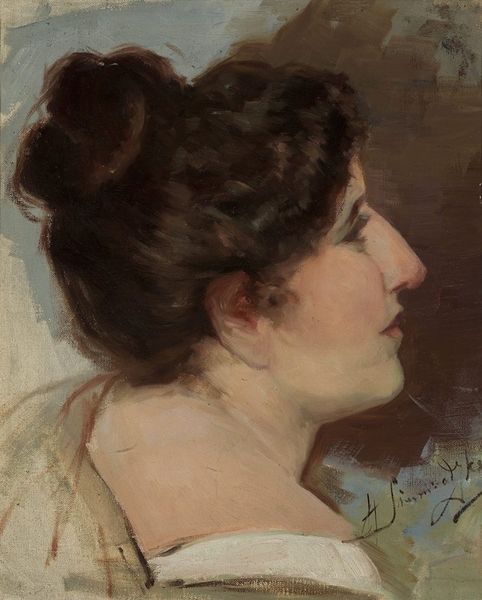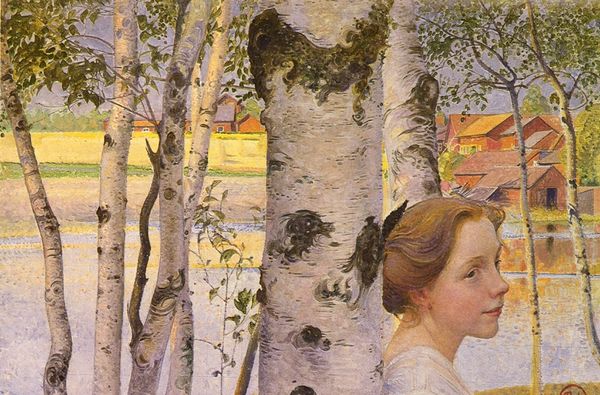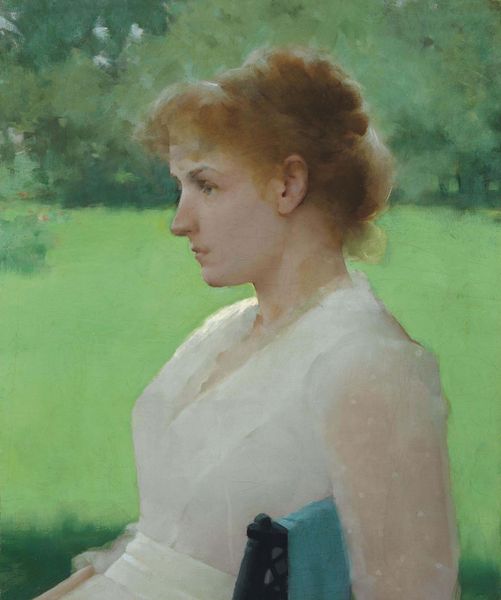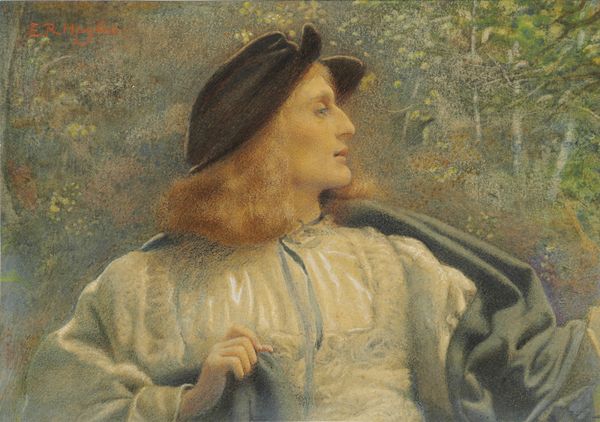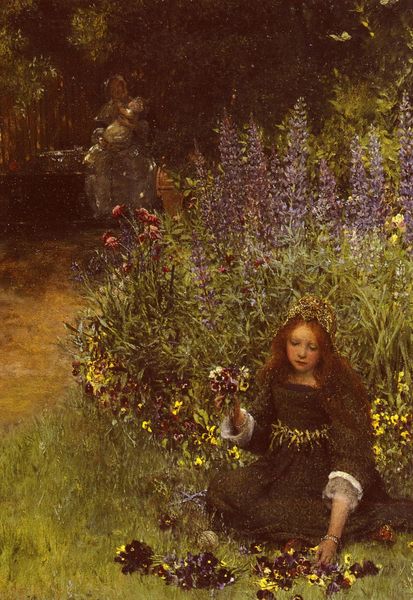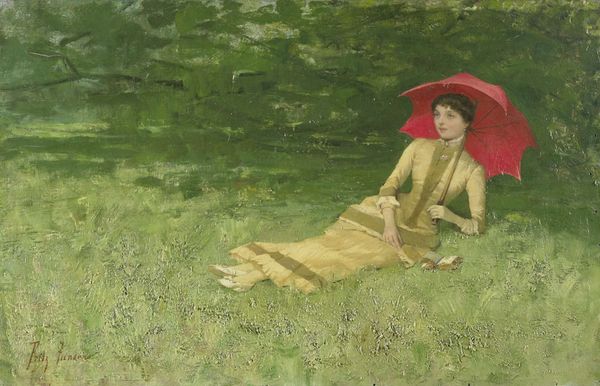
painting, plein-air, oil-paint
#
portrait
#
painting
#
impressionism
#
plein-air
#
oil-paint
#
landscape
#
oil painting
#
portrait art
Copyright: Public domain
Pekka Halonen created this serene oil painting, "Tyttö Rannalla," around 1901. The subdued palette, dominated by greens and whites, is deftly applied with visible brushstrokes. This technique, common in the late 19th century, allowed artists to capture the fleeting effects of light and atmosphere, to represent the world in a way that was radically different from the polished surfaces of earlier academic painting. The young woman's simple white dress also speaks to the way modern life was infiltrating even relatively rural contexts. Machine-made textiles were becoming more available, and influencing even the clothing of everyday people. Halonen's work reflects a broader social movement toward appreciating the dignity of labor and the beauty of the natural world. While oil painting had long been associated with wealth and patronage, artists like Halonen sought to democratize the medium, using it to depict the lives and landscapes of ordinary people. By focusing on materials, making, and context, we can begin to understand how traditional art forms were used to engage with wider social issues of labor, politics, and consumption, challenging traditional distinctions between fine art and craft.
Comments
No comments
Be the first to comment and join the conversation on the ultimate creative platform.
